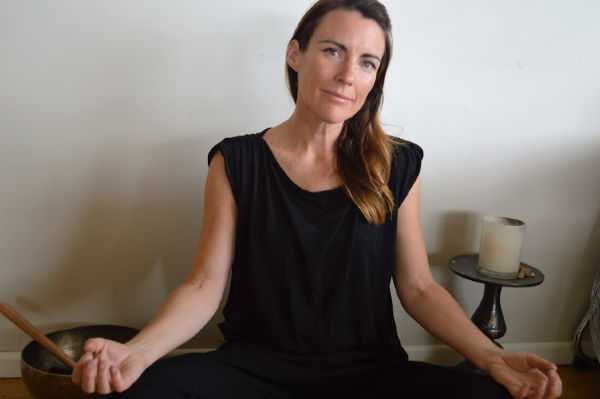
By Sonya Simpson,
Interoception, sometimes considered the 8th sense, is the felt sense or mindfulness of the body, and Interoceptive awareness is the ability to process the signals you receive from your body.
Some examples of this are; levels of energy and how to respond, pain and what to do with it, and sickness and its interpretation. Well-developed interoception has been shown to increase resilience [1], help with emotional regulation [2], improve health and wellbeing [3], support pain sufferers [4], and reduce anxiety [5].
A quick search on Google gives the impression that the world of researchers is becoming quite excited that this sense could bring about greater health and wellness. Yet at the time of writing
From a Yoga perspective, interoception encompasses many of the integral Yogic teachings or beliefs.
Practice with integrity, awareness of self, remove ego, be compassionate, content… move, feel, listen – repeat… so we’re OK because of course we’ve been teaching, practicing, and living with interoception in mind… right?
A couple of years ago I assisted a friend at a corporate conference on wellness.
There was a range of speakers and presenters at the event and a large audience seated at round tables, in an airconditioned room, illuminated with fluorescent lights. Scattered across the space to assist with the presenters were yoga teachers, physiotherapists and other body healers.
The conference ran from
The yoga teachers and body healers
After
I looked about the room and imagined each person in the audience wearing one on their wrists, noticing the mechanical vibration as it signalled they’d ignored their body for too long and then dutifully switching it off so that they could continue to sit in silence, wrapped in their uncomfortable clothes, feet bound, bladders full and bodies aching to move.
Amongst the body healers, the occasional eyebrow raised floating a sweet WTF above the horizon of their heads. Glances were exchanged… but in honesty, we’d all been there. Sit still, listen, don’t wriggle, ask to go to the toilet, it’s not time to eat, finish your dinner, it’s not
Can you remember when it started? I can’t… in fact it’s only in babies or very young children that I observe a natural reaction to the body’s needs, even toddlers often wait for instruction on when to eat, drink or go to the loo.
So how can we claim back the freedom of our body? How do we strengthen our sense of Interoception and interoceptive awareness?
Start right
Take a moment when you wake up in the morning to notice. You are thirsty, you want to stretch, you’re not hungry just yet. Then act on these cues. Stretch in bed, yawn and take some nice deep breaths, then get up and grab a tall glass of room temperature water, squeeze some lemon juice into it and maybe a pinch of salt. Why not take that glass of water outside and spend 10 minutes in natural light?
Use your commute
Your reality might be that you need to commute to work and that’s ok. Instead of this time being wasted ‘dead-time’ why not set an intention? Be kind, let people come
Step away from Tech
I know, I know! You hear this a lot but at intervals during your day step away from tech and reconnect. Even if at first you set a schedule; each hour I will take time to be mindful of the sensations in my body, I will move or rest or talk to another human, not on social media but in real time. Walk over to a colleague’s desk or ring someone (it counts).
Nap
There I said it. Take a nap when you need it instead of another caffeinated drink. Talk to your employer if you need to about
Eat mindfully
Avoid those ‘al desko’ lunches.
Reflect
Take time to reflect and connect with how you are, regularly. This might be during your yoga practice or in any part of your day. Taking a moment every now and again to ask yourself some questions. These could be; how is my breath? Am I feeling any discomfort or pain? If so can I ease these sensations? How is my energy? Am I okay? Initially, there may be things that you need to leave as they are, but perhaps over
So, start at the beginning, a gentle return to self through exploration. Let me know how you travel.
About Sonya

Sonya Simpson is a yoga teacher, content writer, business director and mother of two small boys. She lives with her partner in Auckland and teaches a style of yoga that is based around kindness to self, inquiry through movement and freedom to explore. Sonya is passionate about yoga and exploring the ways that cultural and societal expectation has affected wellbeing. Having experienced the benefits of returning to self through yoga during over 20 years of practice, she is passionate about continuing to research and explore how it can help others both inside and outside of the yoga community, sharing her findings wherever she can. More information can be found on her website, Facebook or Instagram.
Reference list:
- Haase, L., et al., When the brain does not adequately feel the body: Links between low resilience and interoception. Biol Psychol, 2016. 113: p. 37-45.
- Webb, T. L., Miles, E., and Sheeran, P. (2012). Dealing with feeling: a meta-analysis of the effectiveness of strategies derived from the process model of emotion regulation. Psychol. Bull. 138, 775–808.
doi : 10.1037/a0027600 - Farb, N. A., Daubenmier, J., Price, C., Gard, T., Kerr, C., Dunn, B., et al. (2015). Interoception, contemplative practice and health. Front. Psychol. 6:763.
doi : 10.3389/fpsyg.2015.00763 - Kabat-Zinn, J. (1990). Full Catastrophe Living: Using the Wisdom of your Body and Mind to Face Stress, Pain, and Illness. New York, NY: Dell Publishing.
- Paulus, M. P., and Stein, M. B. (2010). Interoception in anxiety and depression. Brain Struct. Funct. 214, 451–463.
doi : 10.1007/s00429-010-0258-9

Leave a Reply